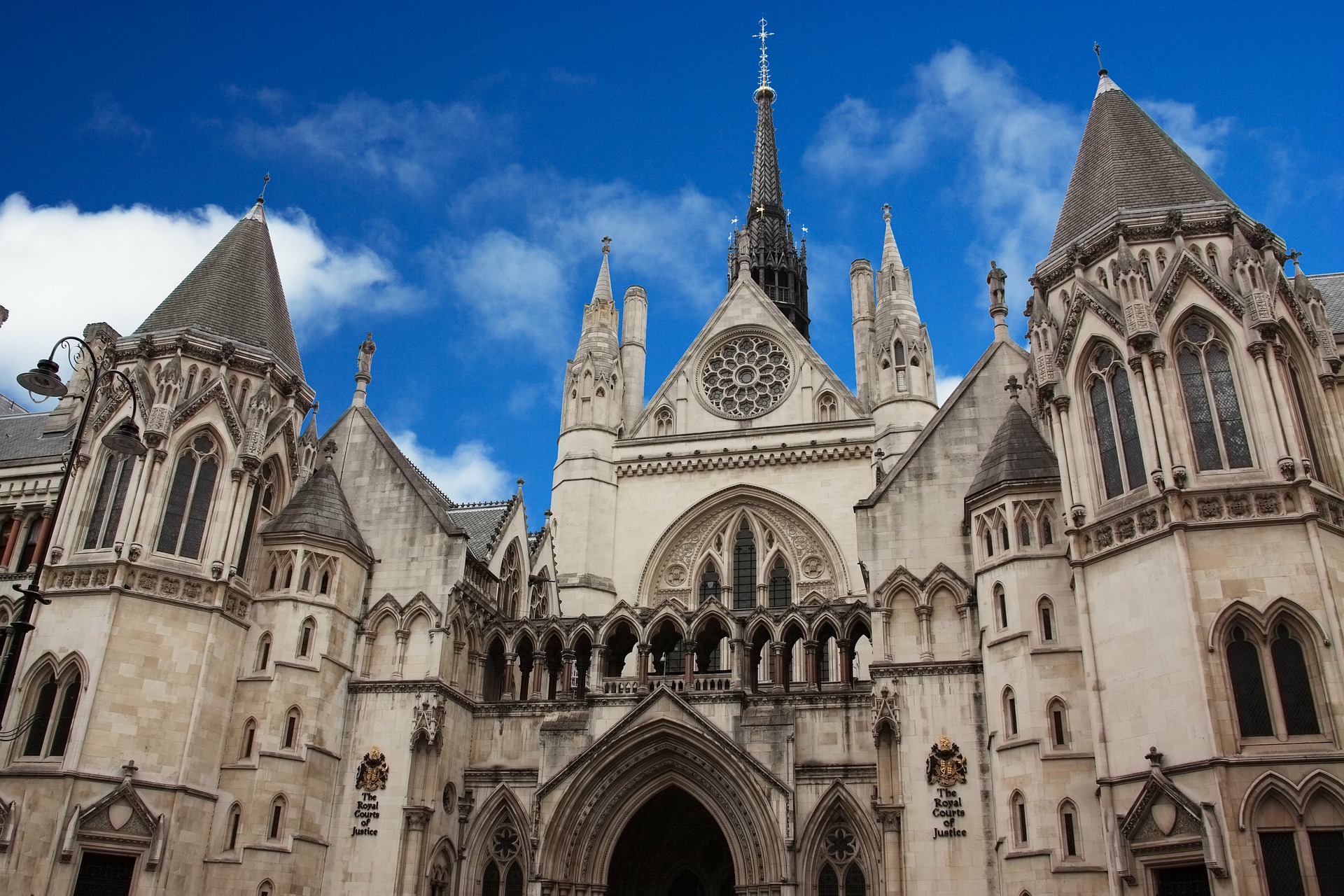
In a previous article, I argued that the UK’s lockdowns were probably a mistake. Lockdowns have not been associated with substantially fewer deaths from COVID-19, except in geographically peripheral countries that imposed strict border controls at the start. The increases in mortality associated with COVID-19 – even in the worst hit Western countries – have been small relative to pre-existing differences. And the societal costs of lockdowns have been substantial, with preliminary analyses suggesting they almost certainly outweighed the benefits.
However, as I noted last time, none of this implies the optimal approach to COVID-19 was ‘do nothing’. COVID-19 is a deadly disease, and the pandemic clearly warranted government action. So what approach should the British Government have taken? I will argue that a focused protection strategy would have been more effective than the policy of intermittent lockdowns. Since the majority of the UK’s age-adjusted excess deaths occurred in the first wave, I shall focus on actions that could have been taken during the crucial months of February and March 2020.
Before proceeding, there’s another alternative approach I want to briefly consider. The Government could have followed China, and imposed a highly restrictive Wuhan-style lockdown in, say, early March – for as long as it took to get case numbers down. At the same time, it could have implemented some combination of travel bans and border quarantines to prevent new cases being brought in from outside. This approach might have proven more effective and less damaging to the economy than its actual policy of intermittent lockdowns, or the alternative policy of focused protection. However, there are several reasons to believe it would not have worked in the UK.
First, it seems unlikely that British people would have complied with measures as stringent as the ones that were ostensibly imposed in Wuhan. Just how restrictive was Wuhan’s lockdown? The BBC reports that “by mid-February, nobody was allowed to leave their residential compounds”, so food and medicines had to be delivered by couriers. One driver is quoted as saying, “During the past two months, almost no-one was on the streets.” Incidentally, I say “ostensibly” because information coming out of China is often carefully curated by the state, and should therefore not be given the same credence as information coming out of, say, Denmark.
Second, it’s not clear that Wuhan’s lockdown was what brought the epidemic under control there. Available data indicates that none of the countries in East Asia has been particularly hard hit by COVID-19 – regardless of what policies were in place. Japan had zero days of mandatory stay-at-home orders last year, and zero days of mandatory business closures, but has reported fewer COVID-19 deaths per million people than every country in Europe (including both Norway and Iceland). This raises the possibility that some cultural or biological factor that is common to all countries in East Asia explains China’s apparent success in dealing with COVID-19.
One might counter that the Government didn’t need to replicate Wuhan’s lockdown in order to suppress the epidemic; it just needed to lock down earlier. According to Neil Ferguson, the death toll in the first wave would have been “halved” if the UK had locked down one week earlier. However, a reduction of this magnitude seems to me highly implausible – though it’s possible there would have been slightly fewer deaths. As the statistician Simon Wood has argued (and as even Chris Whitty has acknowledged) the daily number of fatal infections was already in decline when the UK’s first lockdown was imposed. What’s more, there is little evidence that lockdowns have a substantial impact on deaths over and above that of basic restrictions.
Third, even if the Government had managed to suppress the virus through an earlier or more stringent lockdown, it’s unlikely that suppression could have been maintained until the spring of 2021. Strict border controls might have kept the virus at bay for a while, but another epidemic would have almost certainly erupted at some point. Britain is a large, dense, highly connected country, whereas all the Western states that managed to contain the virus are small, geographically peripheral and/or have low population densities. Overall, it seems doubtful the UK could have suppressed COVID-19 indefinitely. Hence the key question is whether a focused protection strategy would have worked better than the policy of intermittent lockdowns. I will argue that it would have.
Which restrictions work?
At any point during the pandemic, deciding which measures to implement represents a trade-off between their effects on the epidemic’s trajectory and their effects on society at large. Measures that substantially reduce cases or deaths, while having only a small impact on society, are worth putting in place. By contrast, those that barely reduce cases or deaths, while having a large impact on society, are best avoided. Mounting evidence indicates that measures like stay-at-home orders and closures of non-essential businesses are of the latter kind; they have large costs and relatively small benefits. In just the past week, two new studies casting doubt on the efficacy of lockdowns have been published. Vincent Chin and colleagues analysed data from 14 European countries, and found that “lockdown had no consistent impact”. Likewise, Christopher Berry and colleagues examined shelter-in-place orders in the United States, but did “not find detectable effects of these policies on disease spread or deaths”.
However, this is not to say there aren’t any restrictions worth implementing. One measure whose efficacy is supported by a number of studies, and which makes sense intuitively, is restricting large gatherings. For example, Vincent Chin and colleagues found in one of their analyses that “the simple banning of public events was beneficial”. Nicolas Banholzer and colleagues have reported a similar finding. In an unpublished study, they compared the impact of different non-pharmaceutical interventions, and found that “event bans were most effective… whereas stay-at-home orders and work bans were least effective”. Another measure that makes a great deal of sense is telling symptomatic individuals to self-isolate at home.
But how, some people ask incredulously, could lockdowns not have a large impact on the epidemic’s trajectory? Toby Young – the founder of Lockdown Sceptics – has made a number of plausible suggestions. Pharmacies and supermarkets remained open throughout the pandemic, which had the effect of funneling people into enclosed spaces. ‘Key workers’ were still leaving their homes every day, and many of these individuals travel to and from work by public transport. Most transmission is actually nosocomial, due to the high concentration of symptomatic cases in hospitals. I would add that heterogeneity in the behaviours that drive transmission could matter a lot. If most infections are caused by a relatively small number of ‘super-spreaders’ (say, people who are particularly careless) then imposing restrictions on the average person may not do much to curb the epidemic.
Protecting vulnerable groups
The most emphatic endorsement of focused protection as a strategy for dealing with COVID-19 is the Great Barrington Declaration, a public statement co-authored by Sunetra Gupta, Jay Bhattacharya and Martin Kulldorff. As an explainer on the website notes, the Declaration’s strategy is based on two key observations. First, the group of people to whom COVID-19 poses a serious risk is small and relatively well-defined: the elderly and those with certain pre-existing health conditions. (There is more than a thousandfold difference in mortality between the oldest and the youngest.) Second, lockdowns come with enormous costs – not only to the economy, but also to health, education and civil liberties. (And these are not spread evenly across occupation and income groups.) It follows, the authors argue, that we should focus our protective efforts on high-risk groups.
All the measures the authors have proposed strike me as sensible – and they would have been far less costly than the blanket lockdowns we ended up with. For elderly people living at home, they suggest offering home delivery of groceries and other essentials, as well as free N95 masks; and making tests available for friends and family who want to visit. For elderly people living in care homes, they suggest frequent testing of staff, as well as testing of all new residents. (Staff at one care home on the Isle of Wight even lived on site for several weeks to avoid catching COVID-19 – something the Government could have supported on a larger scale via financial incentives.) For elderly people still in the workforce, they suggest working from home where possible, or taking paid sabbaticals. And for elderly people living in multi-generational households, they suggest asking such people to live with an older friend or sibling, or providing them with free hotel rooms.
Assuming that lockdowns would protect care home residents may have been one of the biggest mistakes of the pandemic. According to data from the ONS, nearly half of those who died during the first wave in England and Wales were care home residents. While some have argued the only way to prevent COVID-19 getting into care homes is by suppressing community transmission, there is evidence that a degree of focused protection can be achieved. The Isle of Wight care home that I mentioned above had zero positive cases during the first wave. And it is far from the only one with this record.
Jennifer Burton and colleagues examined data from all 189 care homes in Lothian, Scotland – where residents who developed symptoms were tested for COVID-19 between March 10th to August 2nd 2020. They found that only 37% of care homes had a confirmed COVID-19 outbreak, and that 95% of the deaths (defined as those where COVID-19 was mentioned on the death certificate) were concentrated in these locations. Similarly, Marcello Morciano and colleagues analysed excess deaths at all care homes in England up to August 7th 2020. They found that only 27% of care homes reported any COVID-19 deaths, and that over 99% of the excess deaths were concentrated in these locations. In other words, both studies found that most care homes managed to avoid an outbreak of COVID-19 during the first wave. It’s therefore possible that if more testing resources had been made available to care homes, the total number of deaths would have been much lower.
Another crucial setting where resources should have been focused is hospitals. One anonymous junior doctor has given a particularly vivid account of how unprepared her hospital was for the pandemic. (When she asked if a man who’d just arrived from Italy had been screened for COVID-19, the A&E consultant laughed, admonishing her for “racism” against Italians.) More significantly, Paul McKeigue and colleagues analysed data on all diagnosed cases of COVID-19 in Scotland, as well as a large number of matched controls, and estimated that 30% of severe cases (defined as those that resulted in critical care admission or death) were linked to a recent hospital visit. They also found that recent hospital exposure was the strongest risk factor for severe COVID-19 in the overall population. These findings suggest that once COVID-19 starts spreading in hospitals (as it apparently did in the UK) locking down the rest of society may not do much to reduce the total death toll.
Since people vulnerable to COVID-19 are overrepresented among hospital patients, lowering the risk of nosocomial infections is absolutely essential. One obvious way to do this is by isolating COVID-19 patients in specific wards – something that requires expanding hospital capacity. The Government actually made significant inroads toward this goal by hastily constructing several ‘Nightingale’ hospitals in the spring of 2020. Unfortunately, only the London hospital was completed early enough to make any kind of difference in the first wave. And due to lack of staff and equipment, it ended up treating just 54 patients. Since then, it has emerged that many retired doctors and nurses who volunteered to work in the NHS were stymied by pointless red tape (such as the need to complete training modules on “fire safety” and “preventing radicalisation”). Working to rapidly expand hospital capacity (including by fast-tracking volunteers) should have been a top priority in the early weeks of the pandemic.
Messaging and guidelines
As the researcher Stuart Ritchie argues, Government messaging during the pandemic has not been ideal. It’s been slightly misleading at times, as well as slow to update. For example, substantial emphasis has been placed on washing one’s hands (the slogan launched in September was: “Hands. Face. Space”). Yet it’s now clear that COVID-19 is transmitted primarily – even overwhelmingly – via droplets and aerosols, not via fomites. This means that hand washing, though perfectly sensible, is not an effective way to protect oneself from the disease. Far more important – as the Japanese government has emphasised in its ‘three Cs’ campaign – is avoiding large crowds, closed spaces and close contact. Note that it was only with the easing of lockdown this week that the Government finally changed its slogan to “Hands. Face. Space. Fresh Air” – which doesn’t have quite the same ring to it.
Instead of keeping people cooped up in their houses, the Government should have encouraged safe, outdoor activity, such as walking in the countryside. And it should have advised that all workplaces and businesses be kept well ventilated. (Perhaps a better slogan for the UK would be: “Ventilation, ventilation, ventilation”.) Given the role that airborne particles play in the transmission of COVID-19, keeping the virus out of large, indoor spaces like hospitals and supermarkets is extremely challenging. Thousands of people enter these spaces every day, and the viral particles they expel may take minutes or hours to settle on the ground. One of the few countermeasures that can be taken at short notice is increasing airflow by leaving windows open and installing mechanical ventilation. Of course, in a hospital setting this could make patients cold, so it would presumably need to be combined with provision of extra blankets.
Conclusion
It seems doubtful the UK could have suppressed COVID-19 indefinitely. Hence the key question is whether a focused protection strategy would have worked better than the policy of intermittent lockdowns. I argued above that it would have. The strategy of focused protection is based on two key observations: the group of people to whom COVID-19 poses a serious risk is small and relatively well-defined; and lockdowns come with enormous costs. So what would such a strategy have looked like in the UK?
The Government could have imposed certain basic restrictions that make sense intuitively, such as banning large gatherings – particularly large indoor gatherings. (One can quibble about the exact size at which the ban would have applied, e.g., 50 people versus 100 people.) Aside from that, the Government should not have forced businesses to close or instructed citizens to say in their homes. Though symptomatic individuals should have been given clear guidance to self-isolate.
To protect vulnerable people, the Government should have focused testing resources on care homes, and incentivised staff to live on site over the peak of community transmission. For those living at home, it could have provided free N95 masks and tests for visitors, as well as home delivery of essentials. It could have encouraged those living in multi-generational households to self-isolate with an older friend or sibling, or provided such individuals with free hotel rooms. And it could have encouraged those in the workforce to work from home or take a paid sabbatical.
The Government should have rapidly expanded hospital capacity, while recruiting as many trained volunteers as possible to work in the NHS. New healthcare units (such as the Nightingale hospitals) could have been set aside for COVID-19 patients. Or if that proved impractical (due to lack of specialised equipment, say) such units could have been set aside for vulnerable, non-COVID patients. Testing resources should have been made available to all healthcare staff treating these patients. And the need for staff to have adequate PPE goes without saying.
Finally, the Government should have emphasised the ’three Cs’ in its messaging, while advising that all workplaces and businesses – especially hospitals – be kept well ventilated. Though several of the measures listed above would have come with a steep price tag, they would have been far less costly than the blanket lockdowns we ended up with. And evidence suggests they could have saved lives, perhaps a very large number of lives.
Noah Carl writes about COVID-19 and other topics in his Substack newsletter (where this article was originally published). You can follow him on Twitter @NoahCarl90.









